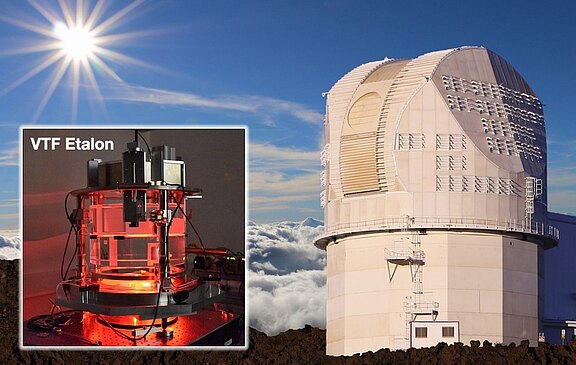Everyone is familiar with auroras, for example, which show the influence of solar activity on the Earth's magnetic field. High-precision measurement methods are required to study our home star. The Visible Tunable Filter (VTF) instrument was developed and built in Freiburg for this purpose, which spectrally filters and analyzes the light. During one observation sequence, up to 12 million spectra are recorded, which are used to determine the temperature, pressure, speed and magnetic field strength at different altitudes in the solar atmosphere. This is crucial for a fundamental understanding of the dynamic effects in the solar atmosphere.
The observations with the VTF are intended to contribute to and enhance predictions of energy eruptions on the sun, which can cause massive geomagnetic disturbances. On an increasingly technical driven Earth, sudden solar storms, which contribute significantly to space weather, can cause devastating damages, from disrupted satellite navigation to disruption of power supplies.
Expanding our understanding of solar mechanisms for more precise predictions requires optical components whose surfaces must be manufactured with atomic layer precision and control technology that works accurately at the same level.
After intensive development, the Freiburg Institute of Solar Physics has now delivered this high-precision measuring instrument for the world's largest solar telescope, the Daniel K. Inouye Solar Telescope (DKIST) on Maui/Hawaii. With a total weight of over 4 tons, the construction of the instrument is distributed over two floors. The logistical efforts required to ship the sensitive device to Hawaii/Maui was correspondingly challenging. In addition to the two large sea containers for the mechanics, the sensitive optics had to be shipped separately by air freight together with the electronics in thermally controlled containers which were also protected against vibrations. After a 2-month journey of the containers, a team from Freiburg has now successfully installed the instrument on the telescope on the Haleakala volcano on Maui. Scientific measurements are expected to begin in summer 2025 after thorough calibration.
